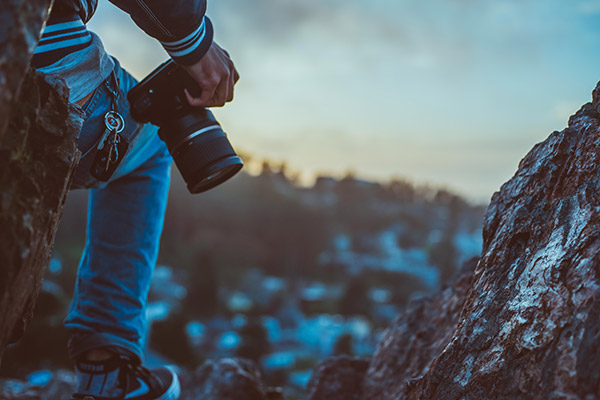Sports photography is a difficult field to master. It requires a large concentration, a good knowledge of the discipline to cover, and preferably high-end equipment. A case with a very responsive autofocus (AF) and a good engine speed is essential. A good rise in ISO sensitivity is also essential, especially in the theater or at night: 2500 to 3200 ISO for high-level football, and often 5000 or 6400 ISO in most sports complexes not intended for professional athletes. The case must be associated with a lens having a large aperture (f / 2.8 or f / 4 minimum) and a long focal length (200 mm minimum).
In short, the sports photo unfortunately requires heavy equipment and expensive to obtain a correct result, especially when the light conditions are poor. But rest assured, to photograph your kid during a football match in the middle of the day, you do not need 5000 euros of equipment!

During the day and with entry-level equipment (700D or 70D coupled to a 70-300 type of lens that is not very bright, opening at f / 5.6, for example), daylight makes it easy to shoot sports such as football or football. rugby, a good opportunity to try sports photography. Recall that for this type of photo, it is necessary to set the shutter speed to a minimum of 1/500. It’s all about compromise, depending on the light available. We will prefer, especially with a low-end box, shooter at 1/500 f / 5.6 500 ISO, that 1/1000 f / 5.6 1000 ISO, knowing that the noise increases with the increase of the ISO sensitivity. On a high-end device (1DX, D4s), the difference in quality between 500 and 1000 ISO is not huge, it is much less embarrassing to favor the shutter speed to perfectly freeze the movement. Moreover, most of the reporters-photographers of the newspaper “The team” favor the shutter speed at the expense of the grain caused by the rise of the ISO sensitivity: I approve this choice, if the material at your disposal allows it .

When the light is scarce, the use of a medium or high-end box (7D, D700, 1D, D3 etc), associated with a telephoto lens (70-200, 300, 400mm) bright (minimum f / 2.8) becomes indispensable. The poor lighting of most sports complexes forces the photographer to push his equipment to the limit of reasonable (6400 ISO, 1/500 f / 2.8). The use of the flash cobra is strongly discouraged: it is also prohibited in many sports (including table tennis), and the rendering is very mediocre.
Football
| Difficulty | Low (day) and average (night) |
| objectives | 70-200 2.8 (action close, pre-match), 300 2.8 (action a little further away, close-up, portrait), 16-35 2.8 (pre-match). The 300 has the advantage of detaching the background. |
| Position | Sitting, ideally on a sinful seat (is decathlon for less than ten euros), on the side of the goal and behind the sideline if space allows: it is not always tolerated by the delegate and / or the referee, but this position allows you to shoot beautiful aerial duels. |
| ISO daytime sensitivity | 100 to 640 |
| ISO sensitivity at night | 2500/3200 (L1), 4000/6400 (amateur football) |
| Shutter speed | 1/1000 for a sharp picture, 1/1600 if possible. In all cases, do not go below 1/500. |
| Opening | f / 2.8 at night, f / 4 during the day, f / 3.2 or f / 4 for corners. |
Basketball
| Difficulty | Average |
| objectives | 70-200 2.8 (action), 300 2.8 (close-up, portrait), 16-35 2.8 (atmosphere with the coach), 24-70 (close action). If you had to choose one, the 70-200 would be perfect! |
| Position | On the ground (to avoid the heads cut in the background), below the basket or on the side of the basket. |
| ISO sensitivity | 2500/3200 (Pro A, Pro B, N1), 4000/6400 (amateur basketball) |
| Shutter speed | 1/1000 minimum for a clear picture. |
| Opening | f / 2.8 |












